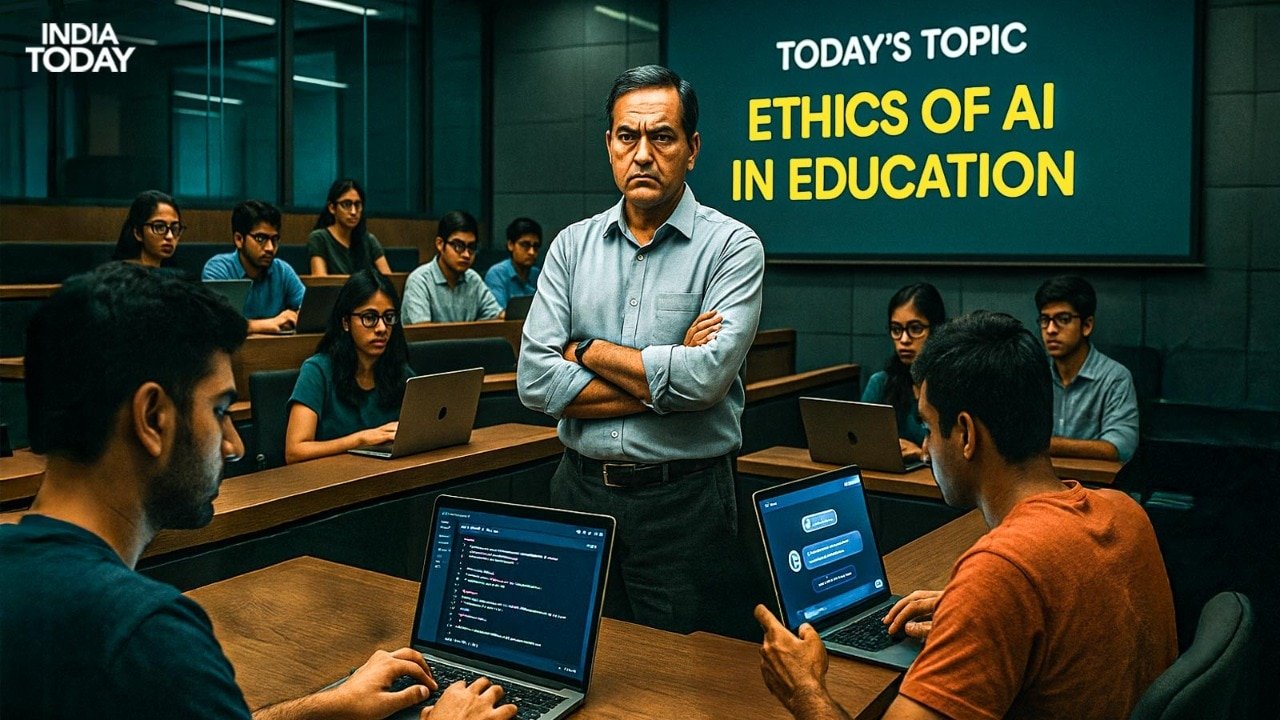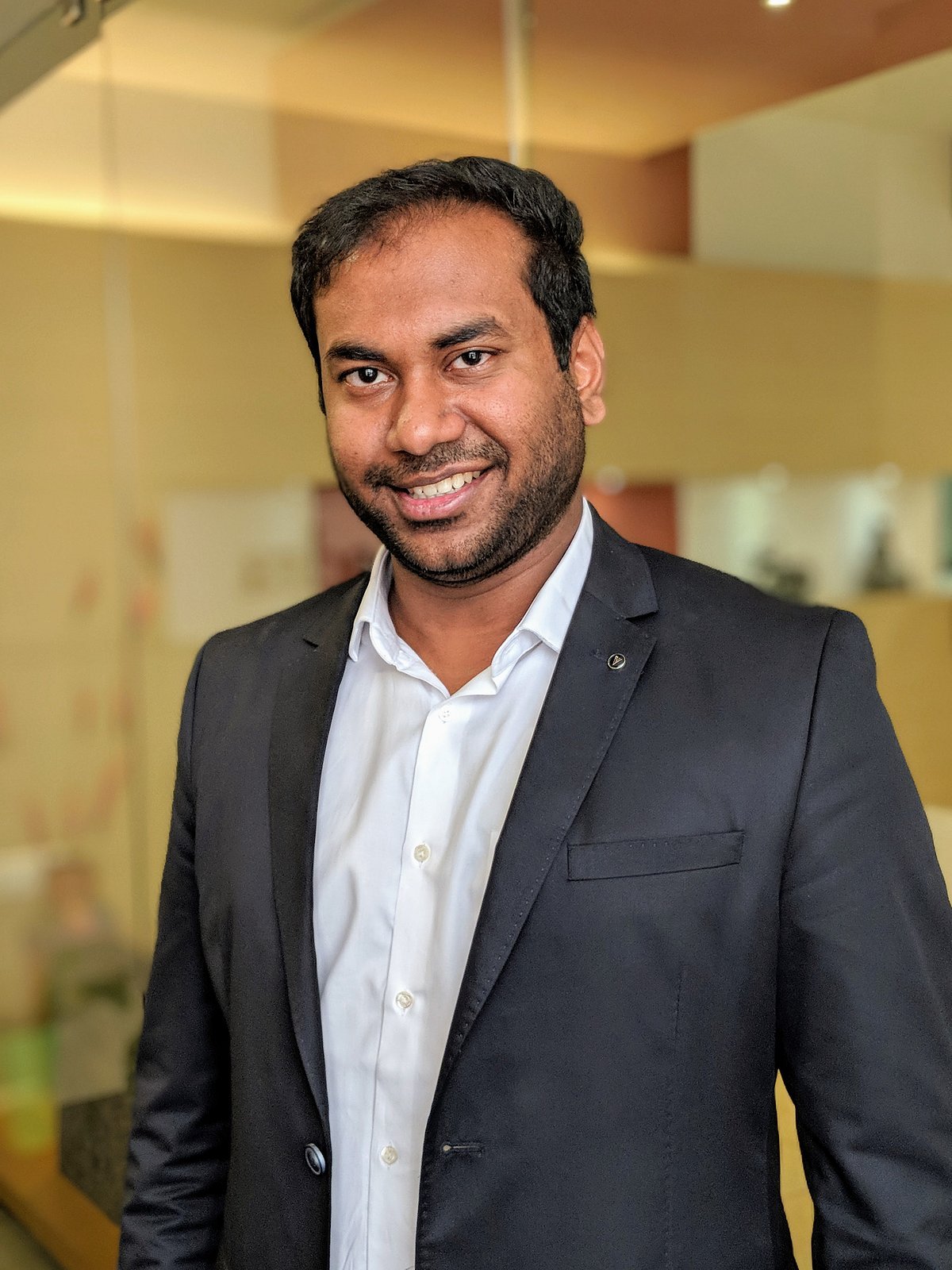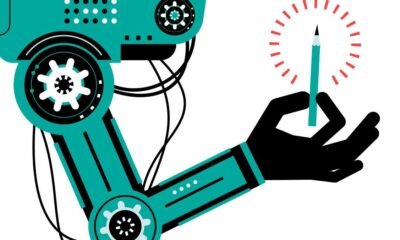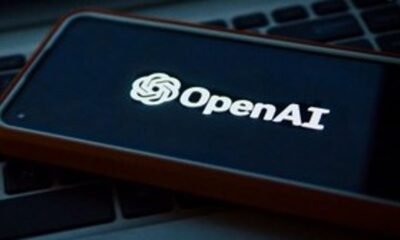Education
AI is now allowed in IITs and IIMs, has the ethics debate reached its end?

In IITs, IIMs, and universities across the country, the use of AI sits in a grey zone. Earlier this year, IIM Kozhikode Director Prof Debashis Chatterjee said that there was no harm in using ChatGPT to write research papers. What started as a whisper has now become a larger question: not whether AI can be used, but how it should be.
Students and professors alike are now open to using it. Many already do, but without clear guidelines. The real issue now isn’t intent, but the lack of defined boundaries that need to be set.
Across India’s top institutions, including IITs, IIMs, and others, the debate is no longer theoretical. It’s practical; real; urgent. From IIT Delhi to IIM Sambalpur, from classrooms to coding labs, students and faculty are confronting the same reality: AI is not just here. It’s working. And it’s working fast.
“There’s no denying AI is here to stay, and the real question is not if it should be used, but how. Students are already using it to support their learning, so it’s vital they understand both its strengths and its limits, including ethical concerns and the cognitive cost of over-reliance,” said Professor Dr Srikanth Sugavanam, IIT Mandi, responding to a question to India Today Digital.
“Institutions shouldn’t restrict AI use, but they must set clear guardrails so that both teachers and students can navigate it responsibly,” he further added.
INITIATIVE BY IIT DELHI
In a changing but firm step, IIT Delhi has issued guidelines for the ethical use of AI by students and faculty. The institute conducted an internal survey before framing them. What they found was striking.
Over 80 percent of students admitted to using tools like ChatGPT, GitHub Copilot, Perplexity AI, Claude, and Chatbots.
On the other hand, more than half the faculty members said they too were using AI — some for drafting, some for coding, some for academic prep.
The new rules are not about banning AI. It is more about drawing a line that says: use it, but don’t outsource your thinking.
ON CAMPUS, A SHIFT IS UNDERWAY
At IIM Jammu, students say the policy is strict: no more than 10 percent AI use is allowed in any assignment.
One student put it simply: “We’re juggling lectures, committees, and eight assignments in three months. Every day feels like a new ball added to the juggling act. In that heat, AI feels like a bit of rain.”
They’re not exaggerating. There are tools now that can read PDFs aloud, prepare slide decks, even draft ideas. The moment you’re stuck, you can ‘chat’ your way out. The tools are easy, accessible, and, for many, essential.
But here’s the other side: some students now build their entire workflow around AI. They use AI to write, AI to humanise, AI to bypass AI detectors.
“Using of plagiarism detection tools, like Turnitin, which claim to detect the Gen-AI content. However, with Gen-AI being so fast evolving, it is difficult for these tools to keep up with its pace. We don’t have a detailed policy framework to clearly distinguish between the ethical and lazy use of Gen-AI,” said Prof Dr Indu Joshi, IIT Mandi.
NOT WHAT AI DOES, BUT WHAT IT REPLACES
At IIM Sambalpur, the administration isn’t trying to hold back AI. They’re embracing it. The institute divides AI use into three pillars:
- Cognitive automation – for tasks like writing and coding
- Cognitive insight – for performance assessment
- Cognitive engagement – for interaction and feedback
Students are encouraged to use AI tools, but with one condition: transparency. They must declare their sources. If AI is used, it must be cited. Unacknowledged use is academic fraud.
“At IIM Sambalpur, we do not prohibit AI tools for research, writing, or coding. We encourage students to use technology as much as possible to enhance their performance. AI is intended to help enhance, not shortcut,” IIM Sambalpur Director Professor Mahadeo Jaiswal told India Today.
But even as tools evolve, a deeper issue is emerging: Are students losing the ability to think for themselves?
MIT’s recent research says yes, too much dependence on AI weakens critical thinking.
It slows down the brain’s ability to analyse, compare, question, and argue. And these are the very skills institutions are supposed to build.
“AI has levelled the field. Earlier, students in small towns didn’t have mentors or exposure. Now, they can train for interviews, get feedback, build skills, all online. But it depends how you use it,” said Samarth Bhardwaj, an IIM Jammu student.
TEACHERS ARE UNDER PRESSURE TOO
The faculty are not immune any more. AI is now turning mentor and performing stuff that even teachers cannot do. With AI around, teaching methods must change.
The old model — assign, submit, grade — works no more. Now, there’s a shift toward ‘guide on the side’ teaching.
Less lecture, more interaction. Instead of essays, group discussions. Instead of theory, hackathons.
It is all about creating real-world learning environments where students must think, talk, solve, and explain why they did what they did. AI can assist, but not answer for them.
SO, WHERE IS THE LINE?
There’s no clear national rule yet. But the broad consensus across IITs and IIMs is this:
-
AI should help, not replace.
-
Declare what you used.
-
Learn, don’t just complete.
Experts like John J Kennedy, former dean at Christ University, say India needs a forward-looking framework.
Not one that fears AI, but one that defines boundaries, teaches ethics, and rewards original thinking.
Today’s students know they can’t ignore AI. Not in tier-1 cities. Not in tier-2 towns either.
Institutions will keep debating policies. Tools will keep evolving. But for students, and teachers, the real test will be one of discipline, not access. Of intent, not ability.
Because AI can do a lot. But it cannot ask the questions that matter.
– Ends
Education
Ram Chella – Colleges Of The Future: AI Transforming Education And Employability

Q. How do you see the shift in approach in higher education with AI becoming an integral part of the workspace and learning?
Education in India is standing at an inflection point. For decades, colleges have measured success by degrees awarded, not by the employability of their graduates. But in the age of artificial intelligence (AI), that equation is being rewritten.
The next generation of top 100 colleges to watch will not be the ones that fear AI. They will be the ones that integrate AI elegantly into their workflow—enhancing learning, improving knowledge retention, and producing students with ‘Proof of Readiness’ rather than just certificates.
Traditional classrooms focus on theory. Employers, however, demand proof. The new model of education flips the script: students are trained and assessed in AI-powered practice environments that validate not just what they know, but how ready they are to perform.
From ‘Degrees to Data-Backed Readiness,’ this shift has far-reaching impact. For students it means higher retention, greater confidence, and stronger employability; for colleges it is a decisive move from degree-centric to outcome-centric reputations; for India it is the ability to uplift 100 million learners at scale, fueling national competitiveness.
Q. Could you share a few examples as ‘a case in point’ that are becoming ‘Colleges of the Future’?
Across India, pioneering initiatives are breaking away from the monotone of certificates and resumes. They are proving that employability in the AI era means readiness, not paperwork:
-
AICTE (All India Council for Technical Education) is redefining how education meets industry. Instead of only accrediting degrees, AICTE is actively integrating AI to match students with industry needs—focusing on skills, outcomes, and readiness rather than just certificates.
-
SWAYAM Plus is shifting from being a digital catalogue of courses to becoming an AI-enabled readiness platform, where learners don’t just “complete” modules but demonstrate skills mapped to real employer demand.
-
Apna Jobs has already powered 7 lakh+ interviews through AI-driven skill-matching, eliminating the inefficiency of resumes. By using AI to perform the “non-scalable” tasks—connecting people with the right opportunities at scale—Apna is showing how technology can redefine placements.
These aren’t just incremental improvements. They represent a systemic break from the past—moving India’s education ecosystem from certificates and resumes to data-backed readiness and employability.
Q. Given the urgency of ‘now,’ why does AI-integrated learning matter beyond campuses?
The push for transformation is not just coming from students or regulators. It is being demanded by employers who are struggling to find talent that is not only qualified on paper but genuinely ready to perform on ‘Day One.’ Hiring managers across IT, BFSI, and manufacturing echo the same frustration: traditional degrees tell them what a student has studied, but not whether that student can actually deliver results.
AI-powered readiness models solve this gap. By validating practice, fluency, and applied skills, they give companies the confidence to hire faster and at scale. It isn’t just good for employers—it’s essential for India’s competitiveness.
Consider the numbers: India produces nearly 1 crore graduates every year, yet industry studies show that less than 30% are considered employable. Closing this gap is not an academic issue; it is an economic emergency. If even 10% more graduates enter the workforce job-ready, the productivity impact could add billions to India’s GDP annually.
This is why the ‘Colleges of the Future’ are not waiting. They are breaking free from the monotone of certificates and resumes, proving that readiness is the new currency of employability.
Q. What is the big picture in your opinion?
The overarching scenario is that it is not about survival. This is about transformation at scale. The future of India’s workforce depends on how boldly higher education institutions embrace AI—not as a threat, but as a partner. In fact, the foundation should start at the school level.
And as we celebrate these Colleges of the Future, we set the stage for a new era where education does not end with a certificate. It ends with readiness for the world of work.
Education
Best UK universities for electrical & electronic engineering – league table

Engineering of electrical and electronic systems, microelectronics, silicon devices and nanotechnology
Education
Best UK universities for economics – league table

The study of what influences income, wealth and wellbeing, and how this can be implemented into policy
-

 Business2 weeks ago
Business2 weeks agoThe Guardian view on Trump and the Fed: independence is no substitute for accountability | Editorial
-
Tools & Platforms1 month ago
Building Trust in Military AI Starts with Opening the Black Box – War on the Rocks
-

 Ethics & Policy2 months ago
Ethics & Policy2 months agoSDAIA Supports Saudi Arabia’s Leadership in Shaping Global AI Ethics, Policy, and Research – وكالة الأنباء السعودية
-

 Events & Conferences4 months ago
Events & Conferences4 months agoJourney to 1000 models: Scaling Instagram’s recommendation system
-

 Jobs & Careers2 months ago
Jobs & Careers2 months agoMumbai-based Perplexity Alternative Has 60k+ Users Without Funding
-

 Podcasts & Talks2 months ago
Podcasts & Talks2 months agoHappy 4th of July! 🎆 Made with Veo 3 in Gemini
-

 Education2 months ago
Education2 months agoMacron says UK and France have duty to tackle illegal migration ‘with humanity, solidarity and firmness’ – UK politics live | Politics
-

 Education2 months ago
Education2 months agoVEX Robotics launches AI-powered classroom robotics system
-

 Podcasts & Talks2 months ago
Podcasts & Talks2 months agoOpenAI 🤝 @teamganassi
-

 Funding & Business2 months ago
Funding & Business2 months agoKayak and Expedia race to build AI travel agents that turn social posts into itineraries



















